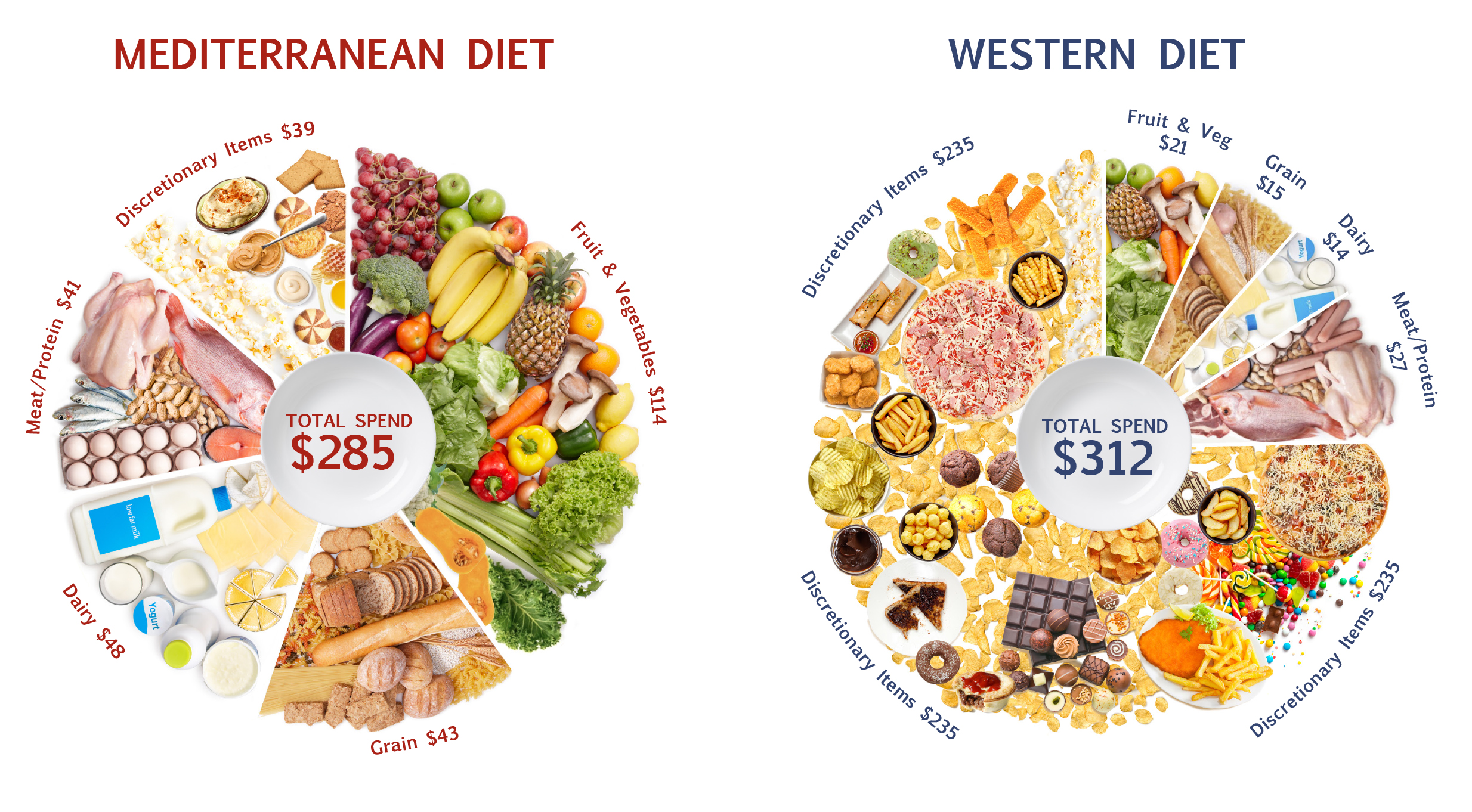24 May 2023
We’ve heard it time and time again – the Mediterranean diet is great for our health. But despite the significant health benefits of this eating plan, a common deterrent is often the expected costs, especially when budgets are tight.
Now, new research from the University of South Australia shows that the Mediterranean diet is not only good for your health but also for your weekly budget, saving a family of four $28 per week (or $1456 per year) compared to the typical Western diet.
The study compared the nutrition profile and weekly costs of three food baskets based on: the typical Australian western diet, the Mediterranean diet, and the Australian Guide to Healthy Eating (AGHE).
It found that the Mediterranean diet and the Australian Guide to Healthy Eating met recommendations for food groups, macronutrient distribution and key micronutrients associated with good health, but the typical Australian diet significantly lacked fibre, zinc, potassium, calcium, magnesium, vitamin E and vitamin B6, and had double the recommended salt intake.
The Mediterranean diet cost $78 per week for a single person household, $135 for a household of two, $211 for a family of three, and $285 for a family of four.
UniSA researcher and PhD candidate Ella Bracci says the research shows that a Mediterranean diet can be a viable and healthy option for cost-conscious families.
“Diet is one of the leading modifiable risks factors for chronic disease. Yet a significant number of Australians are still not consuming a balanced healthy diet,” Bracci says.
“Australians tend to eat a fair amount of food that’s high in fat, salt, and sugar, which reflects the Western diet. Unfortunately, this is also contributing to increased rates of type two diabetes, heart disease, obesity, and osteoporosis.
“To help combat unhealthy food choices, global agencies are increasingly endorsing plant-based diets such as the Mediterranean diet as their preferred guide to healthy eating. The challenge, however, has been for people to adopt these in Australia and one of the greatest barriers is perceived cost.
“The Mediterranean diet encourages eating fruits and veggies, whole grains, nuts, extra virgin olive oil, seeds and seafood, and there is a view that these foods are more expensive. And with cost of living being so high in Australia, it’s no surprise that people are being careful about where their hard-earned dollars go.
“This research shows how a Mediterranean diet can be a cost-effective option, letting people prioritise both their health and their hip pocket.”
The Australian Guide to Healthy Eating recommends that a balanced, healthy diet comprises five food groups: fruit, vegetables and legumes, breads and cereals, dairy foods, and meat (and alternatives).
Only 8% of Australians eat the recommended 375g of vegetables per day, with the average Australian consuming up to 35% of their daily energy from foods high in salt, added sugars and unhealthy fat.

UniSA’s Associate Professor Karen Murphy says healthy food shopping is more affordable than some may expect.
“Eating a balanced healthy diet doesn’t have to break the bank, but eating unhealthy food can damage your body,” Assoc Prof Murphy says.
“Whether you prefer to follow the Australian Guidelines for Healthy Eating or the Mediterranean diet, both provide the necessary nutrients and energy, but as this study shows, the Mediterranean diet is generally less expensive.
“As with anything, shopping around, looking out for specials and mark-downs, purchasing in season, or stocking up on frozen, dried, and canned produce, can help reduce the costs of your weekly grocery shop. As can choosing home-brand or non-premium products.
“A $28 dollar saving may not seem like much a week, but over a year this is nearly $1500, which can make all the difference to your budget when times are tough.”
…………………………………………………………………………………………………………………………
Notes to editors:
Food baskets were developed to meet recommended serving sizes of food groups, and to provide adequate macronutrient and micronutrient intake over a week. Four reference families ensured an array of different nutritional needs.
The study modelled data on four representative Australian households: household of four (two adults, two children, with a weekly income of $3670); household of three (one adult, two children, with a weekly income of $1835); household of two (elderly pensioners with a weekly income of $774); and a household of one (adult with a weekly income of $1835).
…………………………………………………………………………………………………………………………
Contacts for interview:
Ella Bracci E: ella.bracci@mymail.unisa.edu.au
Associate Professor Karen Murphy E: Karen.Murphy@unisa.edu.au
Media contact: Annabel Mansfield M: +61 479 182 489 E: Annabel.Mansfield@unisa.edu.au









